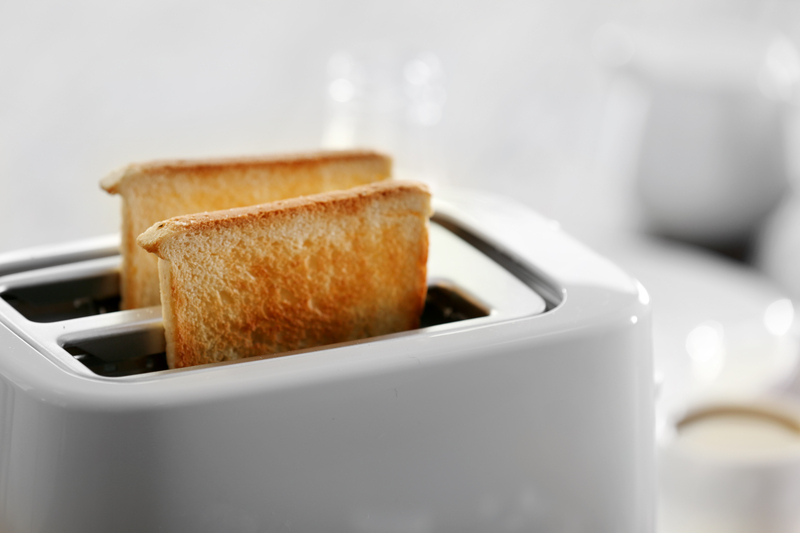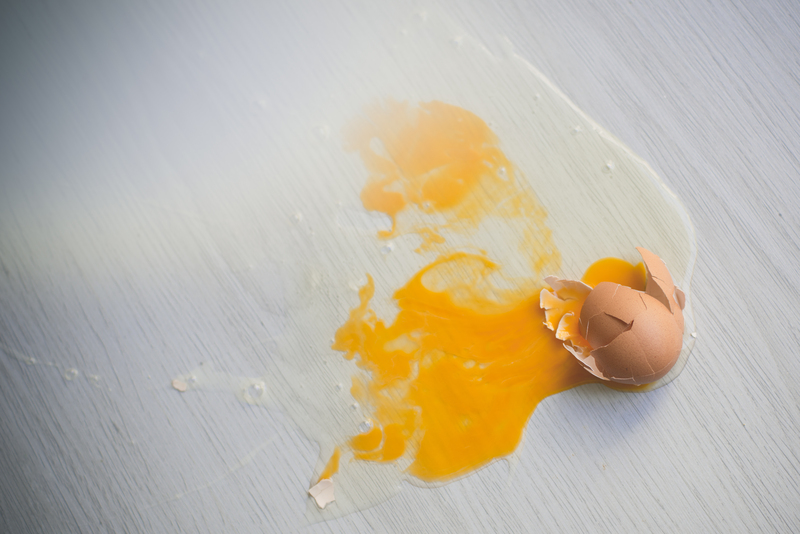Keep Sofa Covers Intact: Secrets to Damage-Free Washing
Posted on 16/06/2025
Keep Sofa Covers Intact: Secrets to Damage-Free Washing
Sofa covers are the unsung heroes of living rooms. Not only do they protect valuable furniture from spills, dust, and daily wear, but they also offer an easy way to switch up decor without investing in new sofas every few years. Yet, many homeowners dread the thought of washing couch covers due to horror stories of shrunken fabric, faded colors, and misshapen seams. How can you ensure your sofa covers remain flawless, wash after wash? Read on to discover the best practices and well-kept secrets for keeping sofa covers intact through every laundering cycle.
Why Proper Sofa Cover Care Matters
When treated with care, sofa slipcovers can last for years, saving you money and effort. Improper washing leads to common issues such as:
- Shrinkage - making it impossible to fit covers back on your sofa
- Color Fading - dulling your living room's aesthetic
- Threadbare patches - reducing protective abilities
- Deformation - resulting in loose or wrinkled fits

Step-by-Step Guide to Damage-Free Washing of Sofa Covers
1. Master the Art of Reading Care Labels
-
Check the care label:
- Look for washing instructions, recommended water temperature, drying methods, and detergent types.
- Pay attention to symbols indicating whether machine washing, hand washing, or dry cleaning is preferred.
- If in doubt, test first: Wash a small hidden section if the material or label is unfamiliar.
Remember: Ignoring the manufacturer's advice is the fastest route to a damaged cover!
2. Vacuum Before You Wash
- Remove dry debris: Before tossing in the washer, use your vacuum's upholstery attachment to remove dust, pet hair, and crumbs. This prevents grit from embedding into the fabric during cleaning.
3. Pre-Treat Stains the Right Way
-
Spot clean stubborn marks:
- Apply a gentle, fabric-safe stain remover on spots.
- Tip: Avoid harsh bleaches that can break down fibers or cause discoloration.
- Let the solution sit for 10-15 minutes, then gently blot with a damp cloth.
- Apply a gentle, fabric-safe stain remover on spots.
4. Choose the Correct Washing Method
- Hand wash delicate fabrics: Linen, silk, and fragile synthetics do best with hand washing in cold water, using a mild detergent.
-
Machine wash cotton and polyester covers:
- Always turn covers inside-out before placing in the machine to minimize surface abrasion.
5. Select a Gentle Detergent
- Opt for a mild, liquid detergent free from bleach or strong fragrances.
- Powder detergents may not dissolve fully and can leave residue, especially on darker covers.
6. Use Cold or Lukewarm Water
- Hot water can shrink and weaken fabric fibers. Cold or lukewarm water preserves both fit and color vibrancy.
7. Gentle Wash Cycles are Essential
- Select the "delicate" or "gentle" cycle on your machine wash settings. This reduces agitation and fabric stretching.
- Avoid overloading the machine to prevent excessive twisting or warping.
8. Rinse Thoroughly
- Ensure all detergent is washed out by running an extra rinse cycle if possible. Residual soap weakens fibers over time.
9. Never Skip the Drying Details
-
Air-drying is best:
- Lay the covers flat on a clean surface or drape over a drying rack to avoid stretching out seams.
- Reshape the covers while damp to prevent wrinkling.
- Avoid direct sunlight: Sun can fade dye and weaken fibers.
- If tumble drying: Use low heat and remove while slightly damp to further reduce shrinkage.
10. Iron with Caution
- If needed, iron sofa covers inside-out on a low setting. Steam helps release wrinkles, but excessive heat damages fibers.
Pro Tips for Sofa Cover Longevity
Rotate and Refresh Regularly
- Switch between two or more sets of couch slipcovers to minimize wear and staining.
- Washing less frequently = longer life.
Avoid Harsh Chemicals and Overwashing
- Spot clean small messes rather than full washes when possible.
- Dry cleaning may be appropriate for high-end or intricate covers, but avoid frequent chemical treatments whenever possible.
Zippers and Fastenings
- Zip and fasten all closures before washing to maintain shape and prevent snagging.
Fabric Protector Sprays
- Use occasional fabric protector sprays (after washing) to repel spills and reduce soil build-up.
Common Mistakes That Damage Sofa Covers--And How to Avoid Them
- Skipping the care label: Every fabric requires specific care--what works for cotton might ruin velvet.
- Overloading the washing machine: This causes misshaping and insufficient cleaning. Wash covers solo or in small batches.
- Using bleach or strong chemicals: These can strip color, damage fibers, and cause rapid wear.
- High heat drying: Leads to shrinkage or texture changes. Stick to air-drying or the gentlest tumble settings.
Understanding Different Sofa Cover Fabrics
Not all sofa slipcovers are created alike. Before choosing your washing method, identify the fabric:
- Cotton: Durable and easy to clean. Machine washable on gentle; avoid hot water.
- Polyester: Resistant to wrinkles and shrinking, but attracts static. Use mild detergent.
- Velvet: Often requires dry-cleaning. If labeled washable, always use a laundry bag and air dry.
- Linen: Can wrinkle and shrink easily. Hand wash or gentle cycle; never wring out.
- Microfiber: Spot clean for best results; machine wash only if specified by manufacturer.
- Blends: Check blend content before washing. Choose the gentlest method suited to the most delicate fiber.
Stain Removal Tricks for Spotless Sofa Covers
- Wine spills: Blot up excess, sprinkle with salt to absorb, and use a vinegar-water solution to dab.
- Grease marks: Sprinkle with talcum powder, let sit, then brush off before washing as usual.
- Pencil or ink: Dab with rubbing alcohol before laundering.
- Pet stains: Use enzymatic cleaners to neutralize odors and break down stains.
The Case for Professional Cleaning
Although DIY washing is budget-friendly, certain situations call for the experts:
- Persistent stains unresponsive to home care.
- High-value fabrics (velvet, silk, brocade).
- Extra-large or intricately tailored covers.
Professional upholstery cleaners have the equipment and techniques to safely deep clean your covers without risk of damage, ensuring couch covers stay intact and stunning.

FAQs About Washing Sofa Covers
Q: How often should sofa covers be washed?
A: For most homes, every three to six months is ideal. Homes with children, pets, or frequent guests may need more frequent cleaning. Spot-clean stains and vacuum regularly in between.
Q: Can all sofa covers be washed at home?
A: No. Always check the care label. Fabrics like velvet and silk often require professional cleaning.
Q: What's the best way to keep colors vibrant?
A: Wash in cold water, avoid direct sunlight drying, and use color-safe, gentle detergents.
Q: Can I machine dry all types of sofa covers?
A: Not always. Many covers fare better with air drying. Tumble dry only on low if stated on the label, and remove promptly.
Conclusion: Extend the Life of Your Sofa Covers
Keeping sofa covers intact and damage-free is simple when you know the secrets! Respect care labels, opt for gentle detergents, avoid high heat, and treat stains promptly. By following these best practices you'll maintain the beauty, fit, and function of your sofa slipcovers for years to come. Protect your investment, enhance your living space, and enjoy a cleaner, more stylish home--one wash at a time.
Want more home-care tips? Bookmark this page and keep your couch covers spotless and damage-free--effortlessly!
```



